CONSERVATION CORNER
A weekly blog for all things conservation
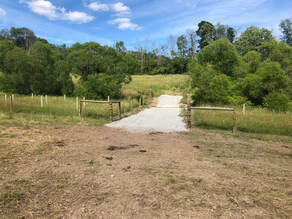 By: Kevin Brown, Agricultural Resource Specialist, Bradford County Conservation District There was a joke in school back in my day that went like, “Do you know how to keep a person in suspense? I will tell you later”. Well, I told you I would help you pay for some of these conservation practices, most notably fencing out streams, in the next column and yet I didn’t. I was keeping you in suspense. Miranda had such a good article that I just had to let her go first. I would like to remind you that even though we here at the District may be doing it for other reasons (clean water, and who wants that?), the real reason to do any of this is for the animals themselves. The happier they are, the faster they grow (for production), and the more they will love us back.
0 Comments
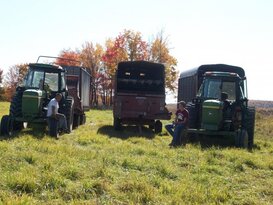 By: Miranda Neville, Agricultural Resource Specialist Every spring all of the farmers I know start to get super antsy and excited to get planting done, only to roll right in to hay season (or whatever crops they grow), then followed immediately by corn harvest in the fall. There is no time for breaks, just a lot of racing to beat the next rainstorm and praying for good summer sun. When they’re planting those seeds, they are planting hope; hope for the future, but it’s important not to forget to take some time every now and then to admire the present moments.  By: Kevin Brown, Agricultural Resource Specialist, Bradford County Conservation District Most animal owners that I know of have animals for one reason. “They enjoy them”. Plain and simple. No matter the species, people love their animals and caring for them brings great comfort. Had a bad day at work, go visit your animals. Been cooped in for 6 months because of COVID (Yep, I just did that. Can’t have a conversation without anymore), go visit your animals. They just make you feel better. It is relaxing and uncomplicated. We hear about “comfort pets” all the time on TV. They just have that effect. Now, because they make us feel so much better, and we love them so much, doesn’t it make sense to do what is right for them? Shouldn’t we show them a little gratitude? How do I propose you do that? I am sure there are the common ways that you are thinking (petting, treats/grain, riding them, etc.). Let me bring up an area that one probably never thinks of - their surroundings. Their day-to-day life. Bear with me and let me explain. 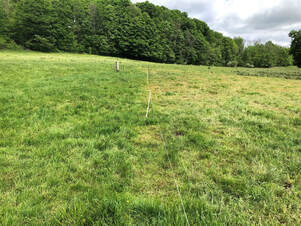 By: Nathan Dewing, Agricultural Team Leader, Bradford County Conservation District Grazing season has arrived which means farmers and animals alike kick their heels in glee! Supplemental feeding in the pasture, barn, or barnyard is expensive, labor intensive and stressful, so all are relieved to see the animals get out onto green pastures again. Grazers, what is one step you can take this year to make your operation more efficient or productive? This is a good way to think about it. When you think about all the things you want to do, you may get overwhelmed and stuck. Selecting ONE allows progress. Let me suggest one to get you thinking. By: Nathan Dewing, Agricultural Team Leader, BCCD
Early each year the Bradford County Conservation District’s agriculture committee holds a strategy session. We consider how we are accomplishing our mission and reconnect with WHY we do what we do. Our mission (from an agricultural perspective) is to engage farmers and consumers to manage resources wisely. When we ask ourselves why, the answers sum up something like this – “because the small decisions we can impact today, turn into foundations for generations.” We use words like this and others like - planning ahead, lasting, sparking curiosity, and coming alive, to describe the process we go through in understanding the natural system. Learning to make wise use of natural resources like soil, water, air, sunlight, plants and wildlife can again shift a farmer’s perspective from work to worthy enterprise, and a consumer’s perspective from food to health. 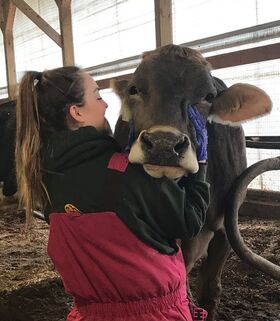 By: Miranda Neville, Agricultural Resource Specialist, BCCD Last week I wrote about how farmers and the industry are growing and evolving exponentially. This week, I’d like to focus on how gender roles have also changed and evolved in the agriculture world. Historically agriculture has been a male dominated industry. Still true today, but the number of women with hands-on involvement or decision-making power on farms is rapidly increasing. Women are also serving an ever-increasing role in the agriculture industry in other ways such as agriculture educators, animal nutritionist, A.I. breeders, veterinarians, CONSERVATION DISTRICT employees, milk testers, and quality assurance inspectors, to name a few. 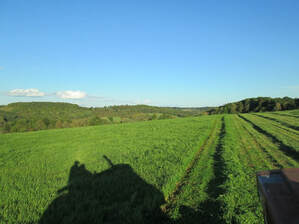 By: Miranda Neville, Agricultural Resource Specialist, BCCD In a fast-paced world that demands constant change with bigger-is-better ideals, many still look at small, conventional, dairy farming as an antiquated way of life. Often referred to as “stubborn farmers”, a term I’ve uttered myself more often than I care to admit…sorry husband, the advancement of farming practices has proven just the opposite. Ironically, if you were to sit down with those “stubborn farmers” you could learn so much about the growth of the industry and how they’ve had to evaluate, adapt, and adjust to so many new pressures. The origin of the family farm was to provide a stable life for a family while supplying surrounding communities with farm fresh milk and locally grown produce. A simpler time. As communities got bigger, so did the demand on the farmer. Not only the demands, but more astringent regulatory requirements and increased skepticism from the general public. Though farmers are getting paid significantly less for their products, operating costs are at an all-time high and many cannot sustain. Dairy farmers are given two options: change to meet demands or sell the farm, the foundation of their family. 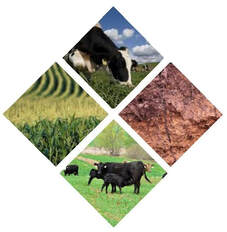 By: Kevin Brown, Ag. Resource Specialist Every year at this time, we have a Soil Health Conference at the Wysox Fire Hall. It is THE place to be if you want to really be on the cutting edge of what is going on in soil health (Gardeners are welcome too. It is all the same soil). We talk about it all year long, but this is IT! This IS the place to be. If you don’t believe me, look at past presenters- Gabe Brown, Dave Brandt, Ray Archuleta, Russ Wilson, and the list goes on. Look for them on our web page, we have recorded some of the past presentations. Look for them on YouTube. They are the pioneers of this movement and we have had them right here in our own backyard. And, even though they are nationally renowned, we have had them here for only a $15 or $20 admission charge. This year’s group is leading the way and they are doing things that most people have never heard of, and making it work. They are doing things that outsiders would think just aren’t possible. Yet, not only are they doing it, they are getting more yield with less inputs. It is a win for everyone concerned (their wallet, our nutrition, the environment, etc.). This year’s talent will be every bit as good as past years. Maybe better. Last week I wrote about “prime” soils and development pressure on prime farmland here in Bradford County. This week I would like to look at the three required components of farmland preservation and how the community can get involved with this important program. Farmland Preservation requires municipalities, landowners, and funding.
To be eligible for the county Farmland Preservation program, farms must: 1) be part of an Agricultural Security Area (ASA) 2) contain at least 50% class I through IV soils, as defined by USDA-NRCS. 3) contain at least 50% harvested cropland, pasture or grazing lands 4) contain at least 50 contiguous acres OR over 10 acres and utilized for a crop unique to the area or contiguous to a property that already has a permanent conservation easement. By: Amy Kneller, Agricultural Resource Specialist, BCCD
We are often asked “Why preserve farmland here when there isn’t development pressure to protect it from?” While Bradford County doesn’t have the visible development pressure of southeastern Pennsylvania, our areas of prime farmland are under pressure to be developed. |
AuthorsVarious staff at the Bradford County Conservation District Archives
July 2024
Categories
All
|
|
Bradford County Conservation District
Stoll Natural Resource Center 200 Lake Road, Suite E | Towanda PA 18848 Phone: (570)-485-3144 |
